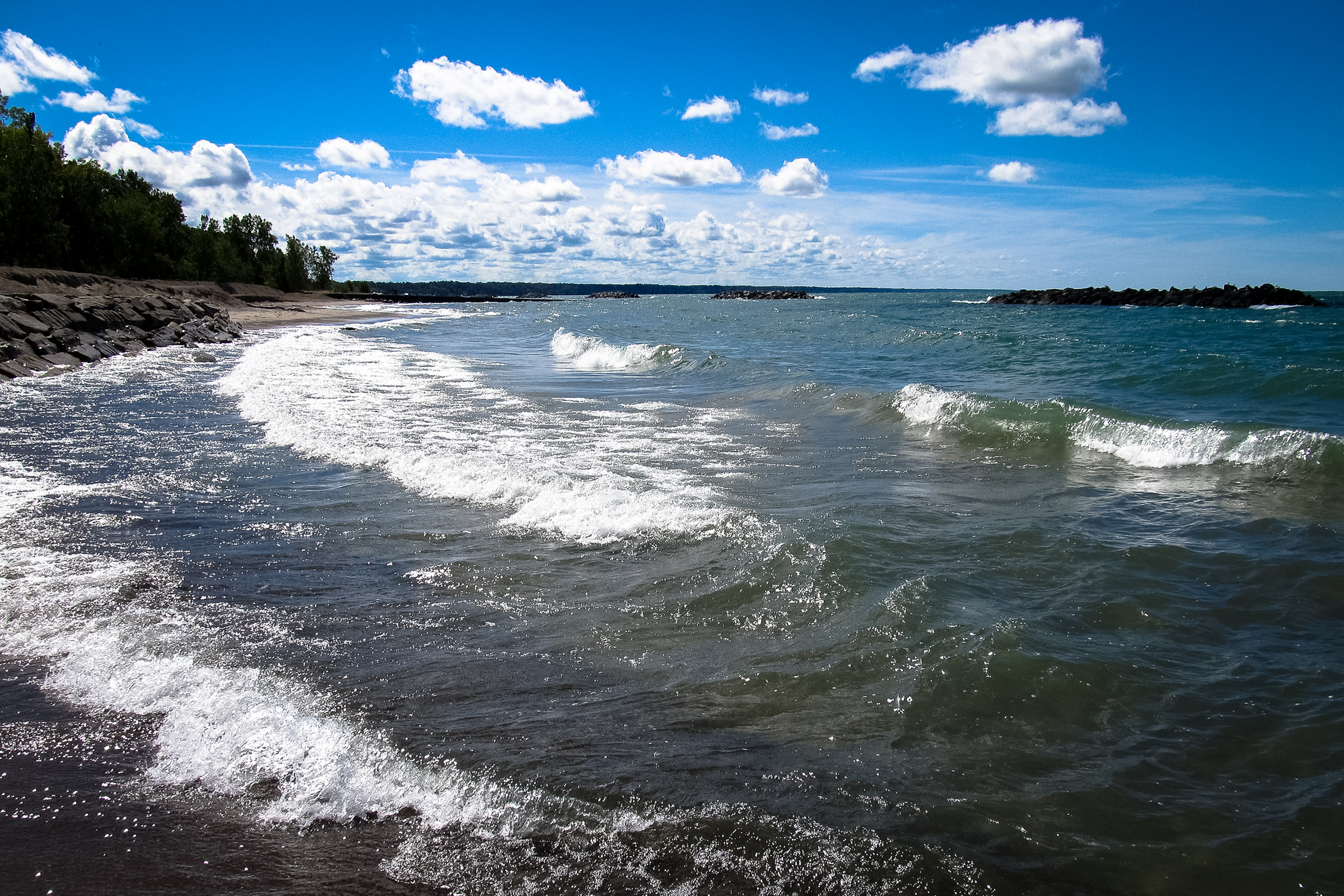NOTE: This story was originally published on July 8, 2016.
This story is part of our Citizen Q series, where we tackle your everyday environmental questions.
Look at a satellite map of Pennsylvania and you’ll see a lot of green. Part of the reason: There’s a ton of water in the state, and much of it resides in the ground. But what that glance at the map won’t reveal is many lakes. (OK—there’s Lake Erie, of course, but hold that thought.)
Pittsburgh artist Travis Mitzel wanted to know what was up with that.
“Pennsylvania seems to be a water-rich state. But I’m curious as to why we don’t have as many naturally occurring lakes as other states.”
To help answer Mitzel’s question, we called up Milt Ostrofsky. He’s a biology professor at Allegheny College in Meadville, Pennsylvania, where he teaches limnology, which—you guessed it—is the study of lakes.
“They typically say here in western Pennsylvania we have eight natural lakes,” Ostrofsky says. “But we have more than that depending on how small you want to go.”
LISTEN: “Why Pennsylvania Has So Few Natural Lakes”
Ostrofsky told us there are all sorts of varying scientific ideas for what makes a lake a lake. Some say a lake can be defined as a body of water that “flushes less than 10 times a year.” Others might say a lake has to be at least 10 acres; or that it has to be a certain depth, so that it’s not overcome with weeds. The list goes on.
But Ostrofsky has a simpler definition.
“I tell my class: Let’s define a lake as simply a hole in the ground that’s full of water.”
Using those criteria, there are 2,500 water-filled holes in the ground in Pennsylvania. But only a handful of them haven’t been created by humans. By comparison, Minnesota—which only receives 26 inches of annual precipitation to Pennsylvania’s 41—bills itself as the land of 10,000 lakes. And Alaska has over three million.

The Allegheny Reservoir, also known as Kinzua Lake, is Pennsylvania’s largest inland lake. But as the name suggests, it is—like most of the state’s lakes—not naturally occurring. Photo: U.S. Department of Agriculture
And that gets us back to Travis Mitzel’s original riddle of why a state with so much water has so few lakes.
Part of the answer rests with the giant ice cube known as the Wisconsin Glacier—which was slip-sliding and retreating over this region between two million and 12,000 years ago. Or rather, wasn’t.
“Glaciation is one of the primary processes that creates lake basins,” Ostrofsky says. And unfortunately for Pennsylvania lake enthusiasts, the ice sheet never made it much past the northeastern and northwestern parts of the state.
“In the absence of glaciation, the central part of the state and all of the southern part of the state are millions of years old without any sort of disturbance.”
By disturbance, Ostrofsky means tectonic activity. And according to Helen Delano, a senior geologic scientist at the Pennsylvania Geological Survey, Pennsylvania is pretty old and hasn’t hosted any such “disturbance” for a long time.
“We don’t have lots of earthquakes causing the land to rise and sink and tilt,” she says.
Without tectonic activity making new depressions for water to gather, you don’t get new lakes. “Lakes are short-lived features in terms of geologic time,” Delano says.
In less-scientific terms, lakes are kind of like your neighbor’s kiddie pool, where kids with grass and dirt on their feet are constantly getting in and out. Given enough time, the grass would choke the pool. With lakes, sediment fills them over time—transforming the lake into a bog, swamp or marsh. Alternatively, water can cut channels out of a lake, causing it to slowly drain. Picture an overzealous kid bending the kiddie pool wall, spilling water all over the lawn.
“So unless something happens to rejuvenate a lake, lakes don’t tend to last very long,” Delano says. (By the way,“very long” in geologic time translates to several thousand years.)
Lakes are kind of like your neighbor’s kiddie pool, where kids with grass and dirt on their feet are constantly getting in and out. Given enough time, the grass would choke the pool. With lakes, sediment fills them over time—transforming the lake into a bog, swamp or marsh. In geologic terms, lakes don’t tend to last very long.
So in a nutshell, Pennsylvania is not particularly lake rich, and the natural lakes we do have are fated to disappear. And the one big lake we really can lay claim to—Lake Erie—came to Pennsylvania through human political wrangling, according to Walter Rybka, director of the Erie Maritime Museum and senior captain of the U.S. Brig Niagara.
“Harbors are God-given; ports are man-made,” he says.
In the late-1700s, Pennsylvania needed access to Lake Erie for commerce, and coveted the natural harbor at Presque Isle. But at the time, lots of people laid claim to the Lake Erie shoreline—including Native American tribes, the state of New York, and the federal government, to name a few. After a long series of disputes, the city of Erie was incorporated in 1795, and access to the lake assured.
As for artist Travis Mitzel—he laughed when he learned geology was to blame for Pennsylvania’s lack of lakes.
“I have now learned that my state is just an old state and our lakes have moved on,” he said. “It’s just interesting to think about the future and what’s going to be around and what’s going to be entirely different.”
###
This story is part of our Citizen Q series, where we answer your everyday questions about the environment. If you have a question, drop us a line. You might just end up on the radio.


